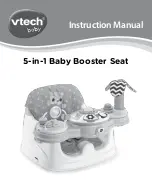
4
Temposonics
®
ET Analog ATEX / IECEx / CEC / NEC / CCC Certified
Operation Manual
8. The cable gland of the sensor must be protected against any exter-
nal impact energy exceeding 4 joule. The maximum thermal load of
the cables must be taken into account.
9. The user is responsible for meeting all safety conditions as
outlined
by:
•
Installation
instructions
•
Local prevailing standards and regulations
10. Any parts of the equipment which got stuck (e.g. by frost or
corrosion) may not be removed by force if potentially explosive
atmosphere is present.
11. The formation of ice on the equipment has to be prevented.
12. It is not allowed to open the sensor.
13. The connecting cable has to be either led out of the hazardous
area uncut or wired to outlets which comply with the type of
protection required locally.
14. The surface temperatures of equipment parts must be kept
clearly below the ignition temperature of the foreseeable air /
dust mixtures in order to prevent the ignition of suspended dust.
How to ensure safe commissioning
1. Protect the sensor against mechanical damage during installation
and operation.
2. Do not use damaged products and secure them against uninten-
tional commissioning. Mark damaged products as being defective.
3. Prevent electrostatic charges.
4. Do not use the sensor in cathodic systems for corrosion protec-
tion. Do not led parasitic currents via the construction.
5. Switch off the supply voltage prior to disconnecting or connecting
the equipment.
6. Connect the sensor very carefully and pay attention to the polarity
of connections, power supply as well as where appropriate to the
shape and duration of control pulses.
7. Use only approved power supplies.
8. Ensure that the specified permissible limit values of the sensor for
supply voltage, environmental conditions, etc. are met.
9. Make
sure
that:
•
the sensor and associated components were installed
according to the instructions
•
the sensor enclosure is clean
•
the magnet does not grind on the rod. This could cause
damage to the magnet and the sensor rod. If there is contact
between the moving magnet including the magnet holder and
the sensor rod, make sure that the maximal speed of the
moving magnet is less or equal 1 m/s.
10. Ground the sensor via the ground lug. Both the sensor and
the moving magnet including magnet holder must be connect-
ed to protective ground (PE) to avoid electrostatic discharge
(ESD).
11. Before applying power, ensure that nobody’s safety is jeopar-
dized by starting machines.
12. Check the function of the sensor regularly and provide documen-
tation of the checks.
(see chapter “6.2 Maintenance” on page 24).
2.3 Installation, commissioning and operation
The position sensors must be used only in technically safe condition.
To maintain this condition and to ensure safe operation, installation,
connection and service, work may be performed only by qualified tech-
nical personnel, according to IEC 60079-14, IEC 60079-17, TRBS 1203,
Canadian Electrical Code (CEC), National Electrical Code (NEC) and lo-
cal regulations.
If danger of injury to persons or of damage to operating equipment
is caused by sensor failure or malfunction, additional safety measures
such as plausibility checks, limit switches, EMERGENCY STOP
systems, protective devices etc. are required. In the event of trouble,
shut down the sensor and protect it against accidental operation.
Safety instructions for commissioning
To maintain the sensor’s operability, it is mandatory to follow the in-
structions given below.
1. Follow the specifications given in the technical data.
2. Ensure that equipment and associated components used in a
hazardous environment are selected and installed in compliance
with regulations governing the geographical location and facility.
Only install equipment that complies with the types of protection
relevant to the applicable Zones and Categories.
3. In explosive atmospheres use only such auxiliary components that
meet all requirements of the local and national standards.
4. The potential equalisation of the system has to be established
according to the regulations of erection applicable in the respec-
tive country of use (VDE 0100, part 540; IEC 364-5-54).
5. Sensors from MTS Sensors are approved only for the intended
use in industrial environments (see chapter “2.1 Intended use”
on page 3). Contact the manufacturer for advice, if aggressive
substances are present in the sensor environment.
6. Measures for lightning protection have to be taken by the user.
7. The user is responsible for the mechanical protection of the
sensor.
Do not alter the sensor afterwards.
The sensor might be damaged.
Do not step on the sensor.
The sensor might be damaged.
Summary of Contents for Temposonics E Series
Page 32: ......





































